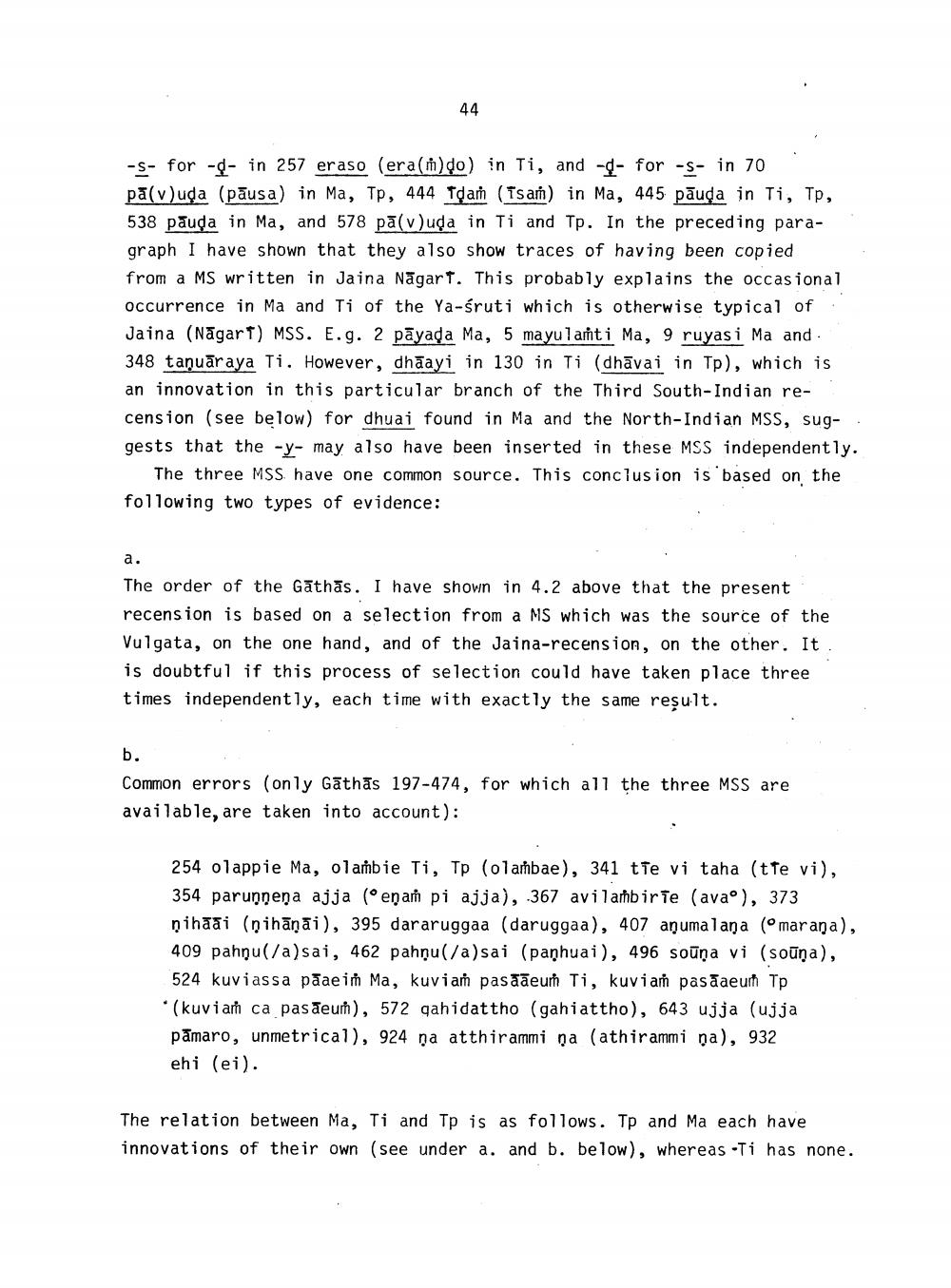________________
44
-S- for -- in 257 eraso (eram)do) in Ti, and -- for -s- in 70 pā(v)uda (pāusa) in Ma, Tp, 444 Tdam (is aṁ) in Ma, 445 pāuda in Ti, Tp, 538 pauda in Ma, and 578 pā(v)uda in Ti and Tp. In the preceding paragraph I have shown that they also show traces of having been copied from a MS written in Jaina Nāgart. This probably explains the occasional occurrence in Ma and Ti of the Ya-śruti which is otherwise typical of Jaina (Nāgart) MSS. E.g. 2 pāyada Ma, 5 mayulanti Ma, 9 ruyas i Ma and 348 taņuāraya Ti. However, dhāayi in 130 in Ti (dhāvai in Tp), which is an innovation in this particular branch of the Third South-Indian recension (see below) for dhuai found in Ma and the North-Indian MSS, sug- . gests that the -y- may also have been inserted in these MSS independently.
The three MSS have one common source. This conclusion is based on the following two types of evidence:
a.
The order of the Gathās. I have shown in 4.2 above that the present recension is based on a selection from a MS which was the source of the Vulgata, on the one hand, and of the Jaina-recension, on the other. It is doubtful if this process of selection could have taken place three times independently, each time with exactly the same result.
b.
Common errors (only Gathās 197-474, for which all the three MSS are available, are taken into account):
254 olappie Ma, olaħbie Ti, Tp (olambae), 341 tte vi taha (tte vi), 354 parunnena ajja (°enan pi ajja), 367 avilambirte (avao), 373 nihai (nihānai), 395 dararuggaa (daruggaa), 407 aumalana (omarana), 409 pahnu(/a)sai, 462 pahņu(/a)sai (panhuai), 496 soūņa vi (soūņa), 524 kuviassa pāae in Ma, kuviaṁ pasāāeuth Ti, kuvia pasāaeuth Tp * (kuviañ ca pasdeun), 572 qahidattho (gahiattho), 643 ujja (ujja pāmaro, unmetrical), 924 na atthirammi na (athirammi ņa), 932 ehi (ei).
The relation between Ma, Ti and Tp is as follows. Tp and Ma each have innovations of their own (see under a. and b. below), whereas -Ti has none.




